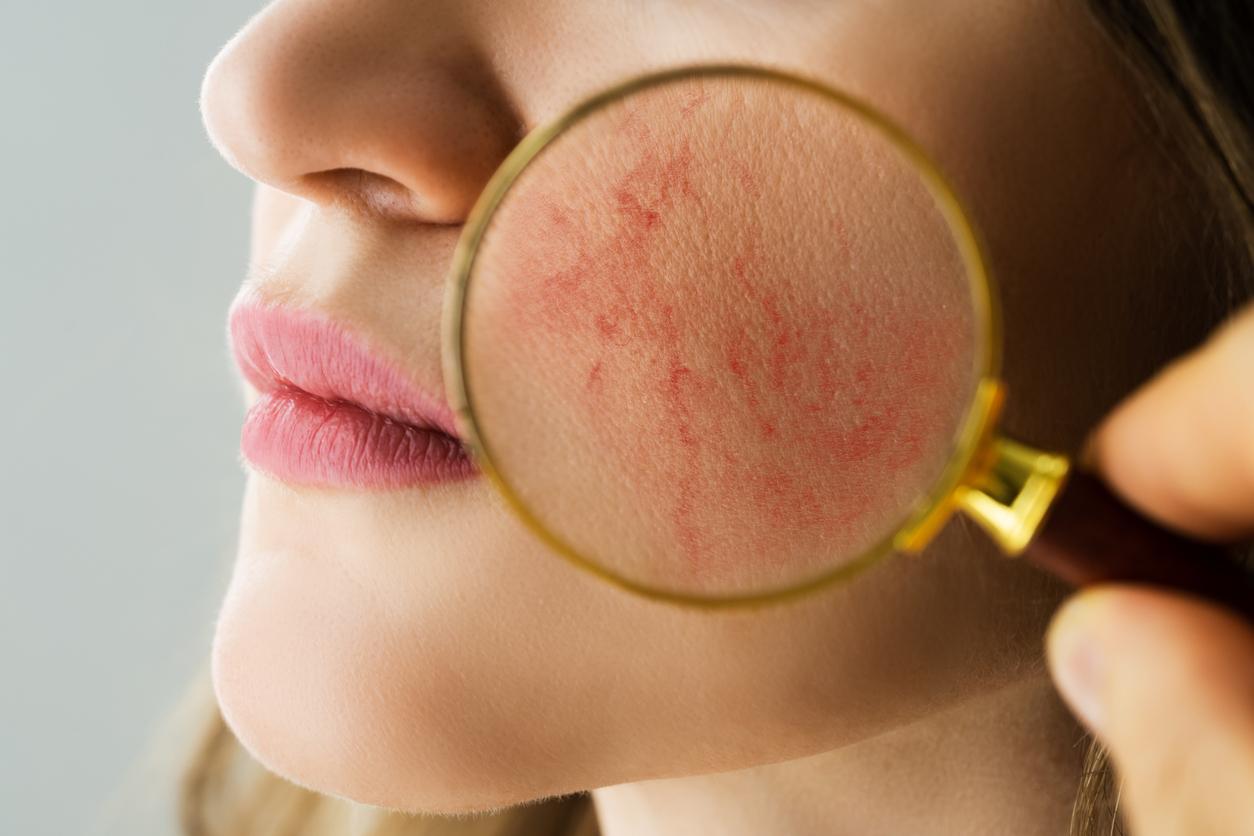Itching, red patches … Urticaria is a common but poorly diagnosed disease. Showing off, it is a source of discomfort for many patients.

Globally, nearly two in 10 people suffer from hives at least once in their lifetime. A frequent skin disease, which however remains unrecognized. The second edition of World Urticaria Day, the 1er Next October, will be the opportunity to educate the general public and people suffering from urticaria on this pathology still too often mistakenly confused with allergy.
Urticaria is an inflammatory disease characterized by red patches and accompanied by itching, sometimes even swelling of the skin or mucous membranes. These plaques resembling nettle stings also have the particularity of moving throughout the day.

Difficult diagnosis
Although it’s more common on the arms or legs, hives can also affect the face, genitals, or mucous membranes like the lips, tongue, or pharynx. In these areas, the lesions are pale, more painful and itch more. They are sudden swelling that usually goes away within 72 hours.
For patients with chronic urticaria, diagnosis is often difficult. For a large majority, the cause of the spontaneous onset of symptoms is not known. Therefore, patients engage in a series of unfortunately unsuccessful medical appointments. “Urticaria is a disease that is not always diagnosed, and when it is chronic, patients are not always well oriented,” explains Dr Angèle Soria of the dermatology and allergology department at Tenon hospital (Paris ). A consultation dedicated to urticaria in centers taking care of this pathology is important to avoid medical nomadism. The development of therapeutic education workshops allowing patients to better understand and control their disease is essential. Finally, the treatment must be adapted to each situation and its impact on the quality of life. “

An altered quality of life
In fact, urticaria is a noticeable disease and can be a source of discomfort. A survey conducted in 1997 showed that 63% of patients suffer from anxiety, and 73% report having an altered sex life. In addition, the disease also interferes in the professional and school life of patients. This is the case for Pierre, 31, a hotel sales representative. “I have to be impeccable in front of my clients. The mornings when I wake up with lips that have tripled in size, I dare not go to my work and I prefer to stay at home. I’m afraid that in the long run, my boss will no longer understand these repeated absences, ”he testifies. According to a study carried out in the United States in 50 patients, more than half of them had to be absent on average 1.5 days per year per person.
Regardless of the type of hives, treatment is based on antihistamines to reduce itching. They work quickly, between 30 minutes and an hour, but do not cure the cause of the disease. To avoid the onset of seizures, specialists recommend avoiding taking non-steroidal anti-inflammatory drugs such as aspirin, taking strains that are too hot or taking a sauna. Learning to cope with stressful situations also eliminates an aggravating factor.
.















